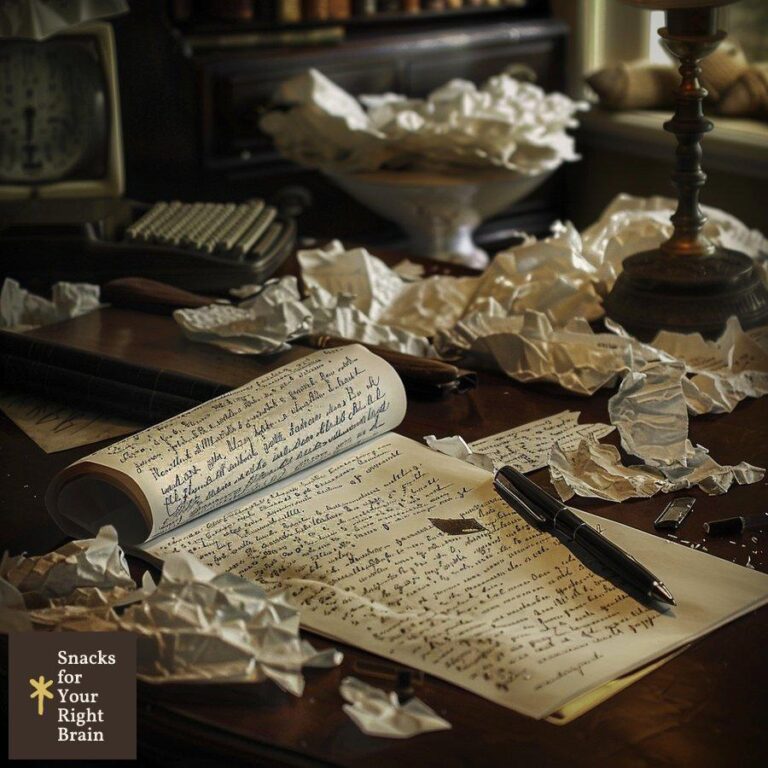What Is a Short Story Plot Theme
What are the key characteristics of a short story?
Short stories are a unique form of narrative that encapsulate a complete tale within a limited word count, typically ranging from 1,000 to 7,500 words. Their brevity allows for a focused exploration of themes, characters, and plots, often leading to impactful conclusions. Understanding the characteristics of short stories can enhance both writing and reading experiences.

****Conciseness and Focus
Short stories demand conciseness. Every word must serve a purpose, contributing to the overall narrative. This focus on brevity often leads to a single, powerful idea or emotion being explored. Writers must distill their thoughts into a clear and engaging narrative, ensuring that every sentence drives the story forward.
****Characterization
Characters in short stories are usually well-defined, though they may not be as deeply developed as those in longer works. The limited space requires authors to create characters that are immediately relatable or intriguing. Often, a single character arc or transformation is explored, allowing readers to connect with the protagonist’s journey.
****Setting and Atmosphere
The setting in a short story plays a vital role in establishing context and mood. Writers must create a vivid backdrop that enhances the narrative without overwhelming it. The setting often reflects the themes and emotions of the story, serving as a silent character that influences the plot.
****Conflict and Resolution
Conflict is essential in short stories, driving the narrative and engaging readers. This conflict can be internal, external, or both, and it typically leads to a resolution that provides closure or insight. The resolution may not always be happy; it can also leave readers with lingering questions or emotions.
****Theme
Themes in short stories are often universal, addressing fundamental human experiences such as love, loss, identity, and morality. These themes resonate with readers, providing depth and meaning to the narrative. A well-crafted theme can elevate a short story, making it memorable and impactful.
How do plot and theme differ in short stories?
Understanding the distinction between plot and theme is crucial for both writers and readers of short stories.
****Definition of Plot
Plot refers to the sequence of events that make up a story. It encompasses the actions, conflicts, and resolutions that occur as the narrative unfolds. In short stories, the plot is typically linear and straightforward, focusing on a specific event or moment in time.
****Definition of Theme
Theme, on the other hand, represents the underlying message or central idea of the story. It is the broader concept that the author seeks to convey through the plot and characters. Themes often explore complex human experiences and emotions, providing readers with insight into life and society.
****Comparison of Plot and Theme
| Aspect | Plot | Theme |
|---|---|---|
| Definition | Sequence of events | Underlying message |
| Focus | What happens | Why it matters |
| Structure | Linear and straightforward | Abstract and complex |
| Purpose | Drives the narrative | Provides depth and meaning |
Recognizing the differences between plot and theme enables writers to craft stories that are not only engaging but also thought-provoking.
What are the essential elements of a short story plot?
A well-structured plot is foundational to an engaging short story. Several essential elements contribute to the effectiveness of a plot.

****Exposition
Exposition introduces the characters, setting, and initial situation. It sets the stage for the story, providing readers with the necessary context to understand the unfolding events. Effective exposition is concise, delivering key information without overwhelming the reader.
****Rising Action
Rising action consists of a series of events that build tension and develop the conflict. This phase is crucial for engaging readers, as it creates anticipation for the climax. Each event should escalate the conflict, leading to a point where the stakes are highest.
****Climax
The climax is the turning point of the story, where the main conflict reaches its peak. This moment is often filled with intense emotion and action, representing a decisive change for the protagonist. The climax is pivotal in determining the outcome of the story.
****Falling Action
Falling action follows the climax and begins to resolve the conflict. It addresses the consequences of the climax and starts to tie up loose ends. This phase is essential for providing closure to the narrative and allowing readers to process the events that have transpired.
****Resolution
Resolution concludes the story, offering a final insight or reflection on the themes presented. It may provide a clear ending or leave readers with open-ended questions, depending on the author’s intent. A strong resolution reinforces the story’s themes and leaves a lasting impression on the reader.
How can themes be identified in short stories?
Identifying themes in short stories requires careful reading and analysis. Several strategies can aid in uncovering the underlying messages.
****Close Reading
Engaging in close reading involves examining the text closely for recurring motifs, symbols, and language. Pay attention to the author’s word choices and the emotional tone of the narrative. These elements often hint at the themes being explored.
****Character Development
Analyzing character arcs can reveal themes. Consider how characters change throughout the story and what experiences shape their development. The challenges they face and the choices they make often reflect broader themes related to human experience.
****Conflict Analysis
Examining the central conflict can also provide insights into the themes. Identify the primary struggles faced by the characters and how these conflicts relate to larger societal or existential issues. The resolution of these conflicts often highlights the story’s thematic concerns.
****Symbolism and Imagery
Authors often use symbols and imagery to convey themes subtly. Look for objects, colors, or settings that seem to carry deeper meanings. Understanding these symbols can enhance comprehension of the story’s themes.
What are the steps to outline a short story?

Outlining a short story is a valuable process that helps writers organize their thoughts and structure their narratives. Here are the essential steps to create an effective outline.
****Identify the Core Idea
Begin by determining the central idea or theme of the story. This core concept will guide the plot and character development, ensuring that all elements align with the intended message.
****Develop Characters
Create profiles for the main characters, including their motivations, conflicts, and relationships. Understanding the characters will help shape the plot and ensure that their actions are consistent throughout the story.
****Establish the Setting
Define the setting, including time and place. The setting should complement the theme and influence the characters’ actions and decisions.
****Outline the Plot Structure
Use the essential elements of plot—exposition, rising action, climax, falling action, and resolution—to create a framework for the story. This structure will serve as a roadmap for the narrative, ensuring a logical flow of events.
****Draft Scene Summaries
For each section of the plot, write brief summaries of the key scenes. These summaries should outline the main actions, character interactions, and conflicts that occur. This step helps visualize the story’s progression and identifies any gaps or inconsistencies.
****Review and Revise
After completing the outline, review it for coherence and alignment with the core theme. Revise any sections that feel disjointed or unclear. This step ensures that the narrative will be engaging and meaningful.
How can plot and theme be effectively integrated in short stories?
Integrating plot and theme is essential for creating a cohesive and impactful short story. Several techniques can facilitate this integration.
****Thematic Foreshadowing
Foreshadowing can subtly hint at the themes that will be explored later in the story. By planting clues in the early sections, writers can create anticipation for the thematic revelations that will unfold.
****Character Actions Reflecting Theme
Characters’ decisions and actions should resonate with the story’s themes. By ensuring that character arcs align with the central message, writers can create a more profound connection between plot and theme.
****Symbolic Elements
Incorporating symbols that reflect the themes can enhance the narrative’s depth. Objects, colors, or recurring motifs can serve as visual representations of the themes, enriching the reader’s experience.
****Conflict Resolution
The way conflicts are resolved can underscore the themes of the story. A resolution that aligns with the thematic concerns can leave a lasting impression, reinforcing the message the author intends to convey.
What are some common pitfalls in developing plot and theme in short stories?

Writers often encounter challenges when developing plot and theme in short stories. Recognizing these pitfalls can help avoid them.
****Overcomplicating the Plot
One common mistake is overcomplicating the plot with too many subplots or characters. Short stories benefit from simplicity and focus. A convoluted plot can confuse readers and dilute the impact of the theme.
****Neglecting Character Development
Characters should be well-developed, even in short stories. Failing to flesh out characters can lead to a lack of emotional connection with readers. This disconnection can diminish the effectiveness of both the plot and theme.
****Ignoring Theme
Some writers may overlook the importance of theme, focusing solely on plot mechanics. A story without a clear theme can feel hollow, lacking depth and resonance. Integrating a meaningful theme enhances the reader’s experience.
****Rushed Resolutions
A rushed resolution can leave readers unsatisfied. It is essential to allow the story to breathe, giving adequate time for the resolution to unfold naturally. A well-paced conclusion reinforces the themes and provides a sense of closure.
In conclusion, understanding the intricacies of short story plot and theme is vital for writers and readers alike. By focusing on the essential characteristics, elements, and integration strategies, one can craft compelling narratives that resonate deeply with audiences.






